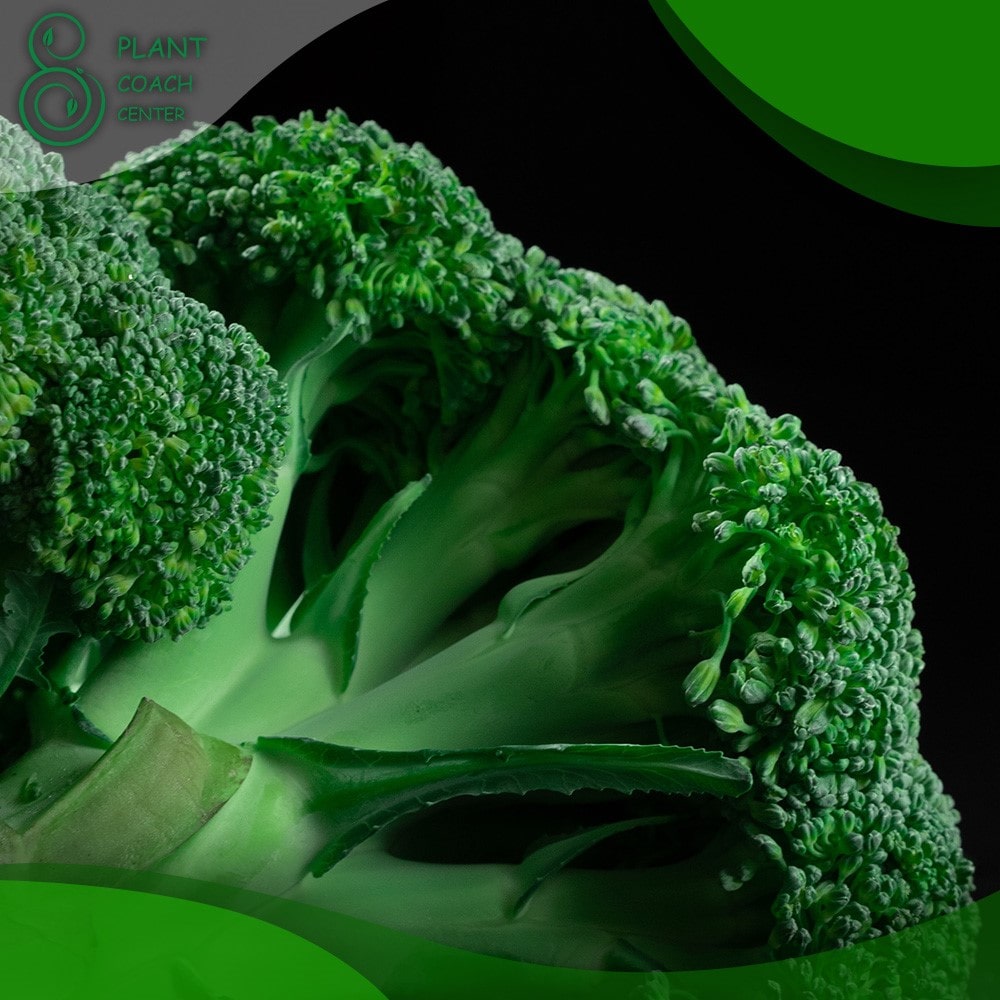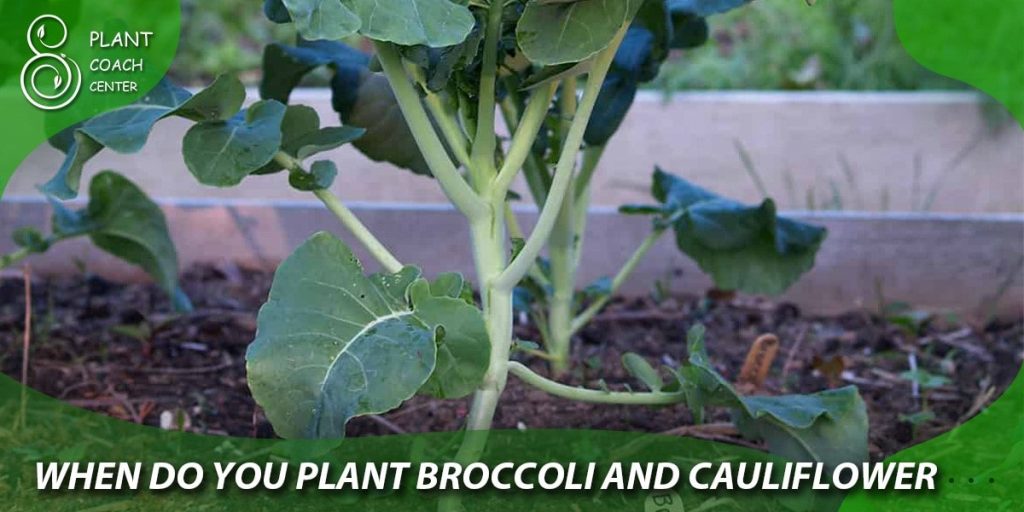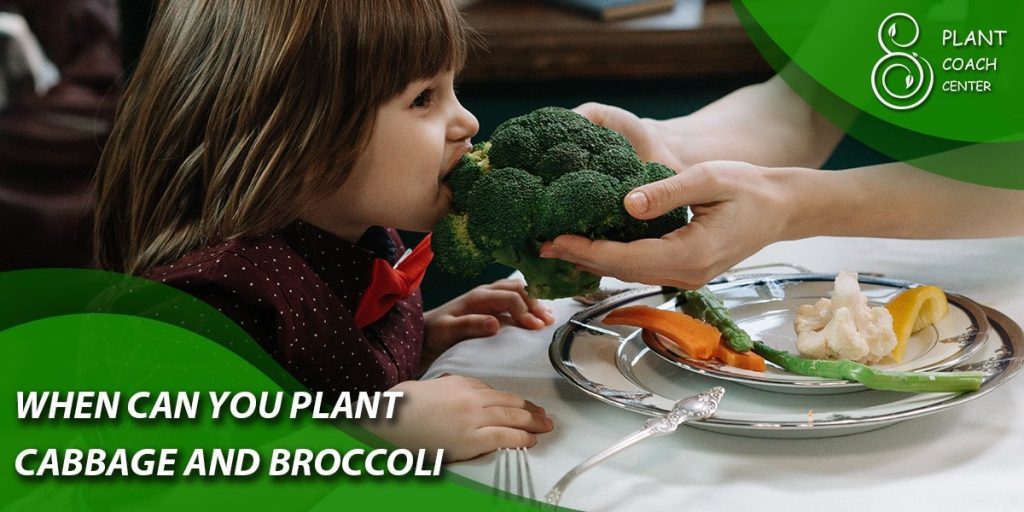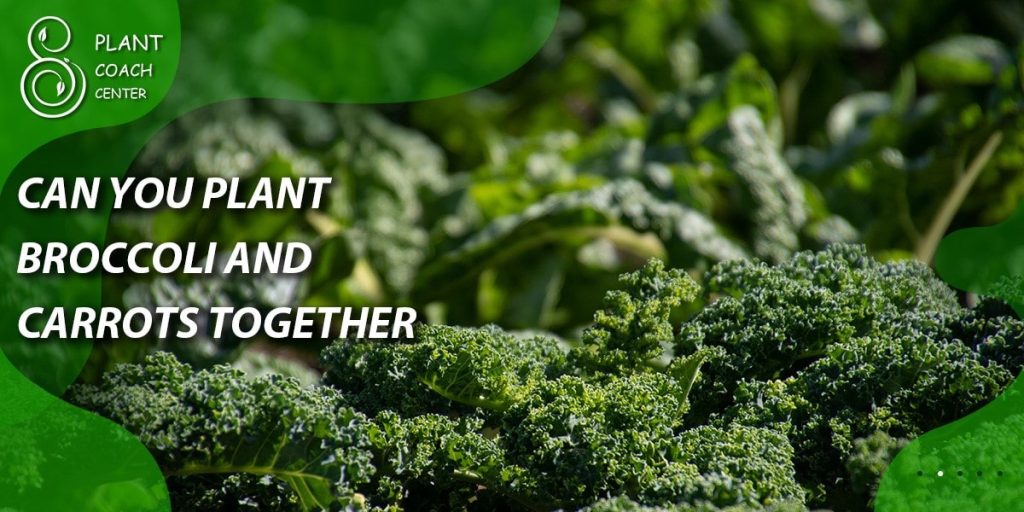When Do You Plant Broccoli?
Welcome to the verdant world of broccoli cultivation! If you’ve ever marveled at the lush green heads of Broccoli adorning supermarket shelves or yearned to grow your own nutritious bounty, you’ve come to the right place. Broccoli, a member of the illustrious cruciferous family, is a delight to the taste buds and a versatile and rewarding addition to any garden.
However, understanding the optimal planting times is crucial to embark on a successful broccoli-growing journey. This comprehensive guide will unlock the secrets of when to plant Broccoli, ensuring you have a flourishing vegetable patch throughout the year. From sowing seeds to nurturing tender seedlings, we’ll explore the entire process, including choosing the suitable varieties for your garden and the valuable practice of companion planting.
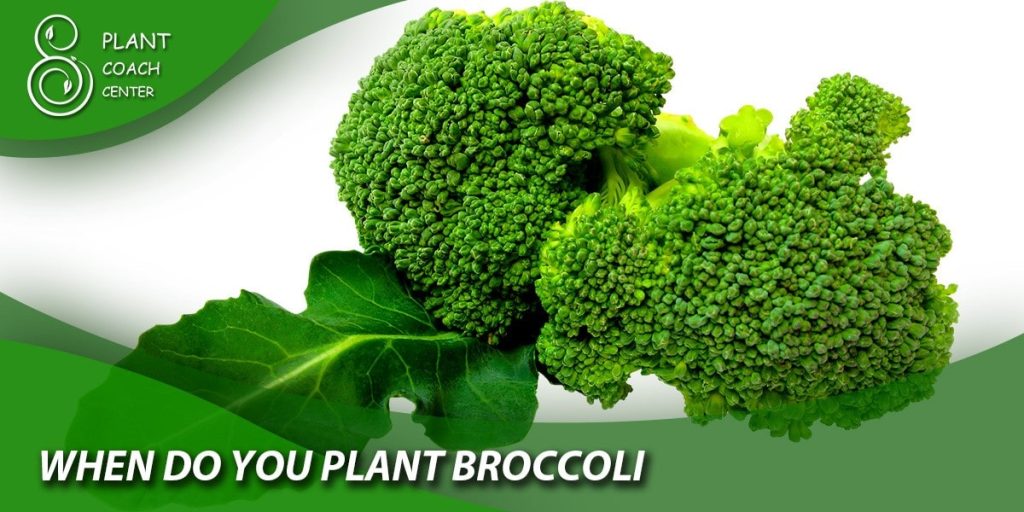
Get ready to delve into the world of broccoli horticulture as we equip you with the knowledge and confidence to cultivate these green marvels in your backyard. Whether you’re a seasoned gardener or a beginner with a green thumb yearning to emerge, this article will be your go-to resource for all things Broccoli. So, put on your gardening gloves, grab your trowel, and dive into the exciting journey of growing this delectable cruciferous gem.
Broccoli Bliss: The Best Seasons to Sow and Grow
When it comes to growing Broccoli, timing is everything. The success of your broccoli crop depends on choosing the proper seasons to sow and grow this nutritious vegetable. Fortunately, Broccoli is a resilient plant that can adapt to various climates, but to achieve the best results, it’s essential to align your planting schedule with the optimal seasons.
Spring Planting: Embracing the Mildness
Spring is one of the prime seasons for sowing broccoli seeds or transplanting seedlings. As the chill of winter gives way to milder temperatures, Broccoli thrives in these cool and moist conditions. Early spring planting allows your Broccoli to establish robust root systems before the summer heat sets in, providing a head start for a fruitful harvest. Remember to monitor potential late frosts and protect your young plants if necessary.
Fall Planting: Extending the Harvest
For gardeners in regions with mild winters, fall presents an excellent opportunity to sow Broccoli for an extended harvest season. Planting in late summer or early fall ensures that the Broccoli matures during the cooler months, which enhances its flavor and minimizes the risk of bolting – when the plant prematurely produces flowers and seeds. As autumn provides cooler temperatures and consistent moisture, your Broccoli will thrive, rewarding you with delicious florets for your culinary endeavors.
Winter Planting: A Challenge Worth Taking
Adventurous gardeners may attempt winter planting for a unique broccoli-growing experience in regions with mild winters and no severe freezes. While winter broccoli demands some extra care and protection from frost, it can be rewarding to harvest fresh Broccoli during the coldest months. Consider using cold frames or row covers to shield the plants from harsh weather and provide them with the necessary warmth to continue thriving.
Avoiding the Summer Sizzle
While Broccoli can tolerate cooler temperatures, it tends to struggle during hot summers. High temperatures often cause the plants to bolt and turn bitter, resulting in a less-than-ideal harvest. In areas with scorching summers, consider skipping summer planting and focus on growing other heat-loving crops, reserving your broccoli endeavors for the more forgiving seasons of spring, fall, and winter.
The Microclimate Advantage
Every garden has its unique microclimate, influenced by sunlight exposure, wind patterns, and nearby structures. Observing and understanding your garden’s microclimate can give you a competitive edge when planting Broccoli. Utilize sun traps or sheltered areas to create more favorable conditions for your plants, maximizing their growth potential and extending the growing seasons.
Succession Planting: A Continuous Harvest
Consider practicing succession planting to enjoy a steady supply of fresh Broccoli throughout the growing season. This involves staggering your planting times, sowing new, or transplanting seedlings every few weeks. As earlier plants are harvested, the later plantings will be ready to take their place, ensuring a continuous supply of this nutritious vegetable from late winter through early summer or from late summer through fall.
Chilly Beginnings: Preparing Your Garden for Broccoli
As you embark on your broccoli-growing journey, laying a solid foundation for your plants is essential to ensure their health and vitality. Preparing your garden for broccoli cultivation involves thoughtful steps to create an environment conducive to optimal growth. From soil preparation to providing adequate protection, here’s a comprehensive guide to getting your garden ready for the chilly embrace of Broccoli.
Soil Enrichment: Nourishing the Ground
Broccoli thrives in nutrient-rich soil, so the first step in preparation is to ensure your garden bed is well-nourished. Conduct a soil test to determine its pH level and nutrient content. Broccoli prefers a slightly acidic to neutral soil pH of 6.0 to 7.0. If your soil’s pH is off-kilter, amend it with lime to raise the pH or sulfur to lower it.
Enrich the soil with organic matter, such as compost or well-rotted manure, to improve its fertility and structure. Work the amendments into the ground thoroughly to provide your Broccoli with a nutrient-packed foundation.
Location, Location, Location: Sun and Space
Selecting the right location for your broccoli patch is crucial for its success. Broccoli thrives in full sun, requiring at least 6 to 8 hours of direct sunlight daily. Choose a spot in your garden that receives ample sunlight, encouraging vigorous growth and promoting the development of full-sized, flavorful heads. Additionally, ensure that your Broccoli has sufficient space to spread its roots and grow. Avoid overcrowding, which can lead to stunted plants and reduced yields.
Frost Protection: Shielding Tender Seedlings
As Broccoli enjoys cooler temperatures, early spring planting may expose your tender seedlings to lingering frost. Protect them from potential damage by using frost cloths or row covers. These protective barriers shield the plants from cold temperatures, allowing light and moisture to penetrate, creating a warm and nurturing microclimate.
Weed Warfare: Taming the Unwanted Green
Weeds can be fierce competitors for nutrients and water, stifling the growth of your broccoli plants. Before planting, clear the designated area of any existing weeds. Once your Broccoli is established, regularly weed the bed to prevent competition and ensure your plants have the best chance to flourish.
Mulching Magic: Retaining Moisture and Suppressing Weeds
Mulching is a gardening wizard’s secret to conserving moisture, regulating soil temperature, and deterring weeds. After planting your Broccoli, apply a layer of organic mulch, such as straw or shredded leaves, around the base of the plants. This protective covering will lock in moisture, reduce the need for frequent watering, and keep pesky weeds at bay.
Adequate Watering: Hydration for Healthy Heads
Consistent and adequate watering is essential for healthy broccoli plants. Ensure your garden receives about 1 to 1.5 inches of water per week from rainfall or irrigation. However, be mindful not to overwater, as Broccoli dislikes waterlogged soil. Aim to keep the soil moist but not soggy, allowing the roots to breathe and absorb nutrients effectively.
Broccoli 101: Choosing the Right Varieties for Your Garden
Regarding Broccoli, the world of varieties is as diverse as exciting. From classic green-headed types to unique and vibrant-colored varieties, selecting the suitable broccoli cultivars for your garden can elevate your growing experience and culinary delights. In this exploration of Broccoli 101, we’ll delve into the different types of Broccoli and provide insights to help you make informed decisions when choosing the perfect varieties for your gardening endeavors.
Green and Lush: Standard Broccoli Varieties
Standard green-headed broccoli varieties are the most familiar and widely cultivated type. These varieties form the classic large, dense heads with deep green florets we commonly see in grocery stores. If you’re a broccoli enthusiast or a first-time grower, starting with a reliable green variety such as “Green Magic” or “Belstar” can be rewarding. These varieties are well-suited for various climates and offer excellent flavor and texture for various culinary applications.
Purple Passion: Broccoli with a Colorful Twist
Purple broccoli varieties are a captivating option for those seeking a touch of novelty in their garden and on their plates. These types, such as “Purple Peacock” or “Purple Sprouting,” boast stunning violet-hued heads and retain their vibrant color even after cooking. Apart from their visual appeal, purple Broccoli also contains beneficial anthocyanin antioxidants, adding extra health benefits to your meals.
Tender and Tasty: Broccoli Raab (Rapini)
Broccoli raab, or rapini, is a delightful departure from the traditional broccoli head. This variety features smaller, tender shoots and leaves with a more robust, slightly bitter flavor. Popular in Italian cuisine, broccoli raab pairs wonderfully with garlic, olive oil, and pasta. If you prefer a more leafy and delicate broccoli experience, “Sessantina Grossa” or “Spring Raab” are excellent choices.
The Allure of Romanesco: Spirals of Nature’s Art
Prepare to be mesmerized by the captivating fractal patterns of Romanesco broccoli. This variety showcases striking lime-green heads with intricate spirals, making it an actual work of art in the garden. Not only is it visually stunning, but Romanesco broccoli also boasts a delicate, nutty flavor, making it a sought-after gourmet choice. Cultivars like “Veronica” or “Romanesco Natalino” are famous for this unique and extraordinary broccoli type.
Early Harvest Delights: Quick-Maturing Varieties
If you’re eager to enjoy your homegrown Broccoli as soon as possible, consider early-maturing varieties. These cultivars are bred to reach maturity quicker than standard varieties, allowing you to savor your harvest earlier in the season. “Blue Wind” and “Early Dividend” are popular choices, providing delicious broccoli heads in as little as 50 to 60 days after planting.
Space-Saving Options: Sprouting Broccoli
Sprouting broccoli varieties fit the bill for gardeners with limited space or those seeking a continuous harvest. Rather than forming a single large head, sprouting Broccoli produces numerous smaller side shoots throughout the growing season. This allows you to enjoy multiple crops from a single plant. “Apollo” and “Piracicaba” are excellent options for this convenient and productive broccoli type.
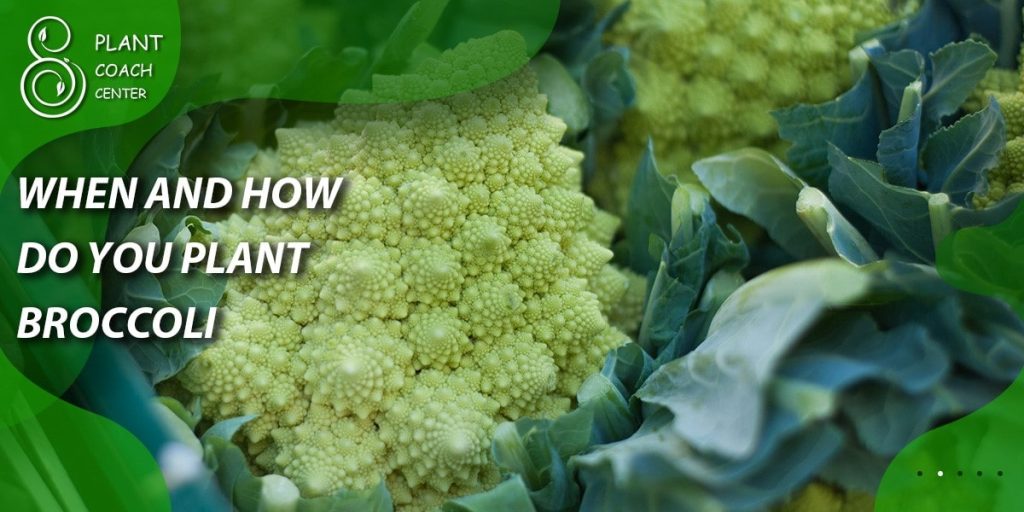
From Seed to Sprout: Mastering Broccoli Germination
The journey of growing Broccoli starts with a tiny seed and the promise of lush green heads to come. Broccoli germination is a critical stage in the plant’s life cycle, where the magic of growth begins. Mastering this process ensures vigorous, healthy seedlings that will eventually flourish into bountiful broccoli plants.
In this guide, we’ll delve into the art of broccoli germination, providing you with the knowledge and techniques to kickstart your broccoli-growing adventure successfully.
Starting with Quality Seeds: The Foundation of Success
The first step in mastering broccoli germination is selecting high-quality seeds. Opt for reputable seed suppliers or choose sources from your well-preserved broccoli plants. Check the seed packets for the “use by” date and choose seeds within their viable period. Quality seeds provide a higher germination rate and reward your efforts with vigorous and productive plants.
Ideal Germination Conditions: The Right Environment
Broccoli seeds germinate best in excellent, moist conditions, which mimic the cool seasons they thrive in. Start the germination process indoors or in a greenhouse, where you can control the environment more effectively. Use seed-starting trays or containers filled with a well-draining seed-starting mix. Moisten the mix before sowing the seeds to create a favorable medium for germination.
Sowing the Seeds: Patience and Precision
Broccoli seeds are relatively small, so avoid overcrowding when sowing. Use your finger or a dibber to make small holes in the seed-starting mix, placing the seeds about 1/4 to 1/2 inch deep. Space the seeds at least 2 inches apart to allow ample room for growth. After sowing, gently cover the bases with the mix and lightly pat it down.
Adequate Watering: Keeping it Moist, Not Waterlogged
Moisture is essential for broccoli seed germination, but be cautious not to overwater. Keep the seed-starting mix consistently moist but not waterlogged. A spray bottle or gentle watering can help control water application and prevent the seeds from disturbing. Maintain proper moisture levels throughout the germination period to support healthy sprout development.
Temperature Considerations: Cooler is Better
Broccoli seeds prefer cooler temperatures for successful germination, ideally around 65°F to 75°F (18°C to 24°C). You can use a seedling heat mat to maintain the desired temperature, especially if the ambient conditions are too warm. Once the seeds have germinated, gradually reduce the temperature to around 55°F to 60°F (13°C to 16°C) to promote sturdy seedling growth.
Patience and Transplanting: Allowing the Seedlings to Strengthen
Germination typically takes 5 to 10 days but can vary depending on the variety and environmental conditions. Be patient and avoid disturbing the seeds during this period. Once the seedlings develop their first true leaves, they are ready for transplanting. Harden off the seedlings by gradually exposing them to outdoor conditions for a few days before transplanting them into the garden.
Conclusion
In conclusion, mastering the art of growing Broccoli is a rewarding journey filled with green wonders and culinary delights. From choosing the proper planting seasons to ensuring healthy germination and nurturing green companions, each step contributes to a thriving and productive broccoli patch.
Embracing the principles of companion planting can create a harmonious garden ecosystem that promotes the health of your broccoli plants and deters common pests. However, it is essential to remain vigilant and promptly address any potential issues to maintain your broccoli crop’s vitality.
You can overcome common challenges and enjoy a successful harvest by understanding and implementing the troubleshooting techniques provided. As you embark on your broccoli-growing adventure, let the valuable resources and expertise at PlantCouchCenter.com be your guiding light. This website offers a wealth of gardening knowledge, tips, and community support, empowering you to cultivate a flourishing garden and relish the joy of homegrown broccoli year after year. Happy gardening!
Can I grow Broccoli in hot climates?
You can grow Broccoli in hot climates by choosing heat-tolerant varieties and providing ample shade and consistent watering.
How long does it take for Broccoli to mature?
Depending on the variety and growing conditions, Broccoli typically takes 60 to 100 days from seed to harvest.
What can I plant alongside Broccoli to deter pests?
Marigolds, dill, and cilantro are excellent companion plants that help deter pests and attract beneficial insects to your broccoli patch.


